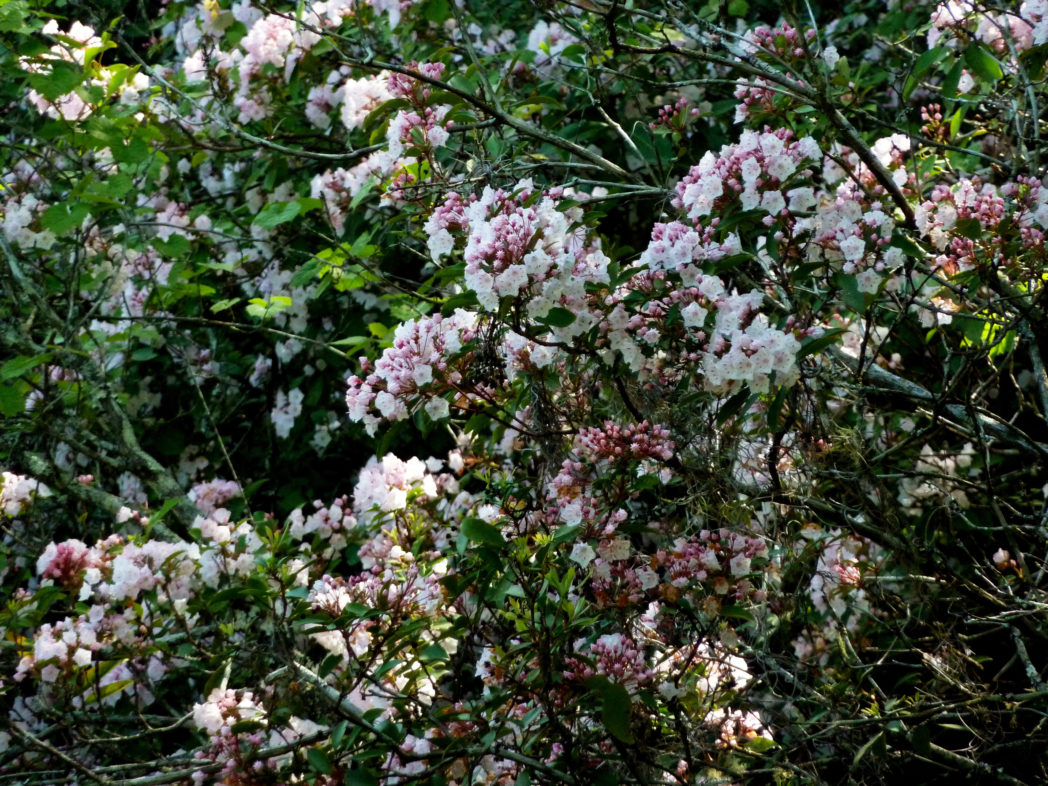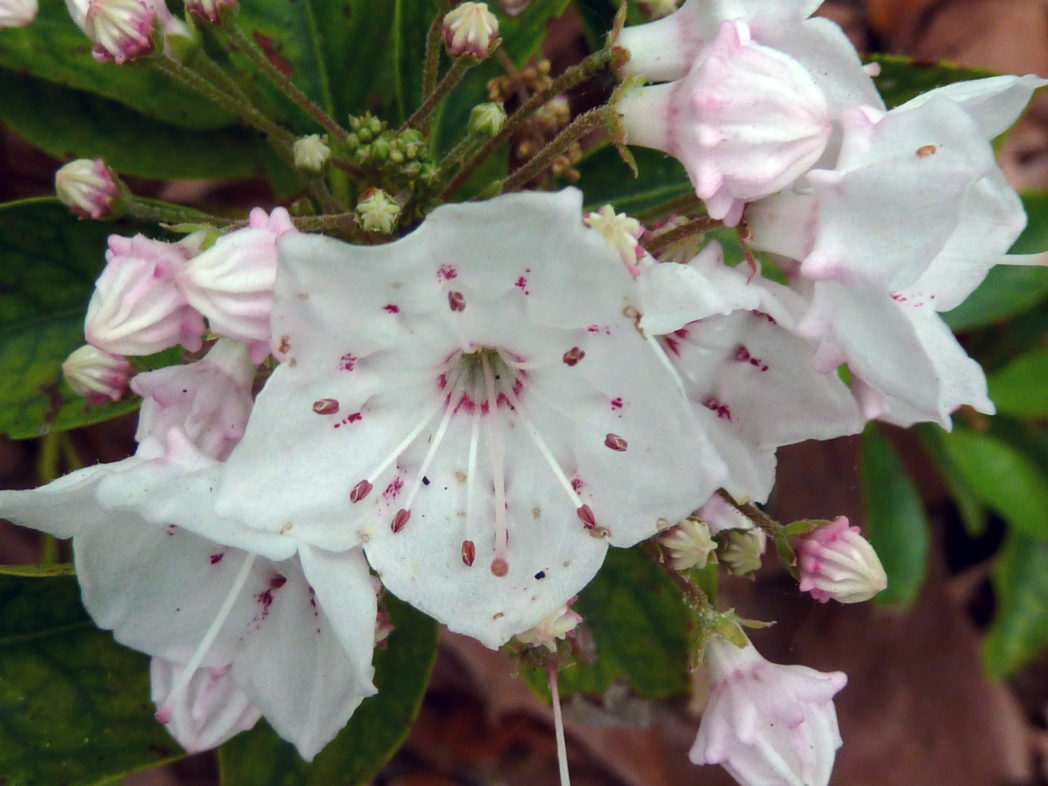Mountain laurel
Pictured above: Mountain laurel (Kalmia latifolia) Photo by Eleanor Dietrich. Click on terms for botanical definitions. View post as a PDF.
Mountain laurel (Kalmia latifolia) is an evergreen, perennial shrub to small tree that puts on a spectacular springtime display. Its many showy flowers are whitish-pink with dark pink rings in their centers and deep rose-colored “pockets” along the petals in which the filaments fit. Each five-lobed corollais cupped or bell-shaped and flattens into a decagonal shape as the flower opens. Flowers occur in a multitude of flat-topped clusters. Mountain laurel’s thick, leathery leaves are elliptic, narrowing at the base, and have entiremargins. They are alternately arranged.
Pollen dispersal in mountain laurel is unusual compared to many other flowers. The filaments are bent and under tension. When an insect lands on the flower, the movement releases the tension and the pollen is catapulted from the filament onto the insect.

Mountain laurel typically blooms in spring and occurs naturally in slope forests, bluffs and along creeks, seep streams and swamp edges. It attracts bees and provides cover for birds and small mammals. It is a state-listed threatened species in Florida.
The genus name Kalmia was named by Carl Linnaeus for his student, Peter Kalm, an 18th century botanist who visited the United States.
Family: Ericaceae (Heath or heather family)
Native range: Panhandle west of Jefferson County and Suwannee County
To see where natural populations of mountain laurel have been vouchered, visit www.florida.plantatlas.usf.edu.
Hardiness: 8A–9A
Soil: Moist to moderately dry, acidic soils
Exposure: Partial to full shade
Growth habit: 10’+ tall, 5+’ wide
Garden tips: Mountain laurel makes a nice specimen tree. It can also be used as a buffer or background screen as it cans be thicket-forming.
Mountain laurel plants are often available from nurseries that specialize in Florida native plants. Visit www.PlantRealFlorida.org to find a nursery in your area.

